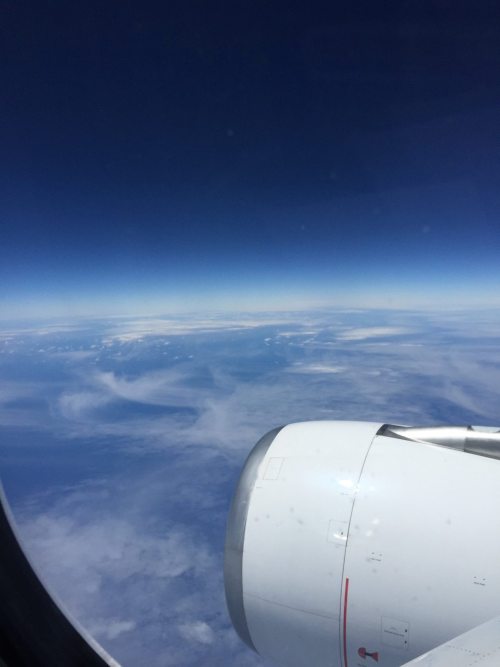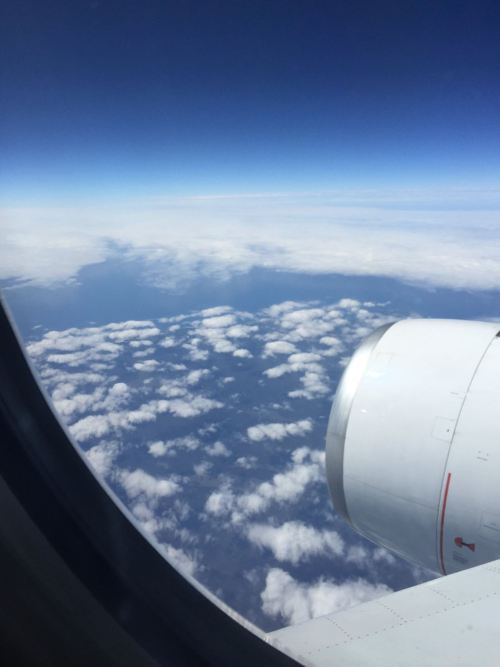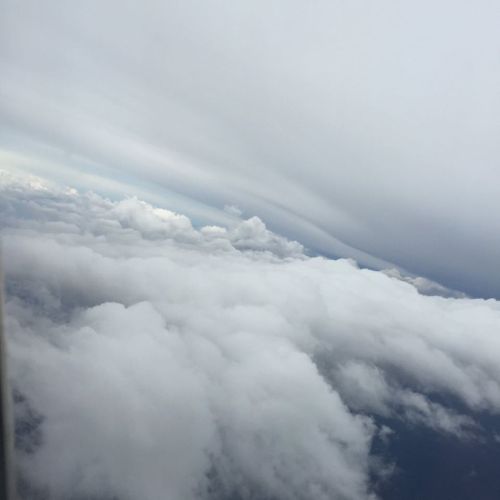Air and its Layers Air is invisible, but its molecules scatter sunlight to produce the sky’s b
Air and its LayersAir is invisible, but its molecules scatter sunlight to produce the sky’s blue colour. While cloud droplets are also colourless, when large masses of droplets reflect incoming light they create clouds that seem white, grey or almost black. Cloud patterns are monitored from satellites and meteorologists interpret them to track weather.Dust particles, cloud droplets, and ice crystals reflect, refract, and scatter light. These effects create red sunsets, rainbows and a variety of other wonderful optical phenomena. The refraction of light as it passes between different layers of air at different temperatures also produces mirages.In the lower layers, the atmospheric gases are well mixed by turbulent winds. At about 62 miles (100km) above Earth gravitational effects become larger than the turbulent mixing and gases begin to separate based on their mass. A small fraction of the lightest gases, hydrogen and helium, achieve escape velocities and leave. The lowest layer of the atmosphere, the troposphere, accounts for 90 percent of its total mass and where our weather occurs.In the middle latitudes, the troposphere’s average height is about 7 miles (11km), but it reaches higher near the equator and is lower close to the poles. The border between the troposphere and stratosphere, the next atmospheric layer, is called the tropopause. The stratosphere extends from the tropopause at about 30 miles (50km) above Earth’s surface. It is in this zone that that relatively high concentrations of ozone are found (O3 molecules, deadly if it were lower for us, saves us where it is), yes, it’s the ozone layer.Temperature in the layers of the atmosphere is determined by height. In the troposphere temperature decreases with altitude. Air in the stratosphere, however, warms with height, varying from about —65°F (—54°C) to 32°F (0°C) at the stratopause. Moving up through the mesosphere, air temperature falls from about 32°F (0°C) to —110°F (—80°C) at the mesopause, at an altitude of about 50 miles (80km). Air in the thermosphere is very cold, but at the top, near the thermopause, its temperature exceeds 1,500°F (815°C).Temperatures continue to rise in the exosphere, the atmosphere’s outermost region, which gradually blends into outer space. There is no boundary between the atmosphere and space. Gases simply become less dense. Satellites orbit where the air is so thin that it has little effect on them. Their cameras capture the clouds far below where the biggest storm clouds are no higher than 10 miles (16km).~ JMPhoto Credit: Mainhttp://commons.wikimedia.org/wiki/File:Layers_of_the_atmosphere.PNGPhoto Credit: My ownMore Info:Earth’s Atmosphere: http://www.eoearth.org/view/article/171011/Escape velocity: http://www.nasa.gov/audience/foreducators/k-4/features/F_Escape_Velocity.htmlSkydiver Felix Baumgartner makes the highest skydive ever Oct. 14, 2012. He jumped from 128,000 feet (39,000 meters), or about 24 miles up, during the Red Bull Stratos mission: https://www.youtube.com/watch?v=pO8mWEg4Yvg -- source link
Tumblr Blog : the-earth-story.com
#atmosphere#mesospehre#mesopause#exosphere#thermosphere#troposphere#stratosphere#science#weather#earth



